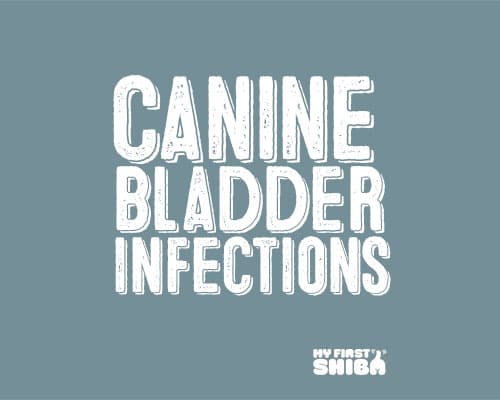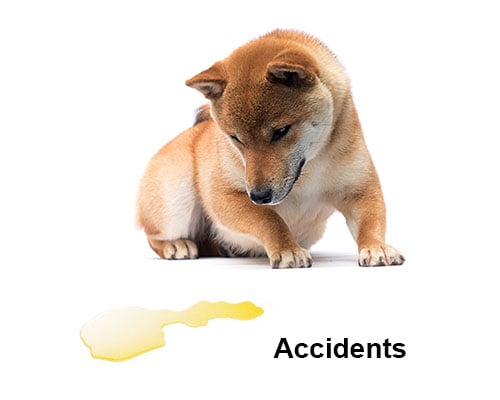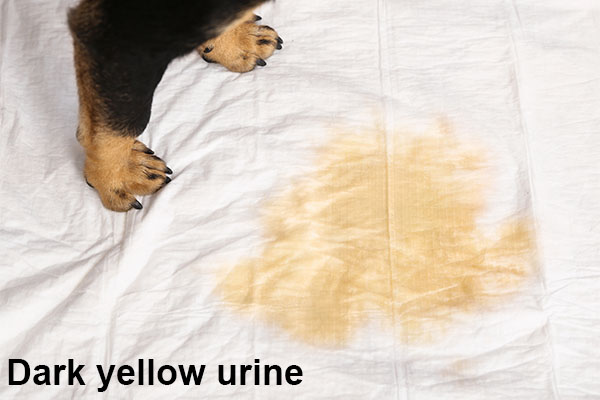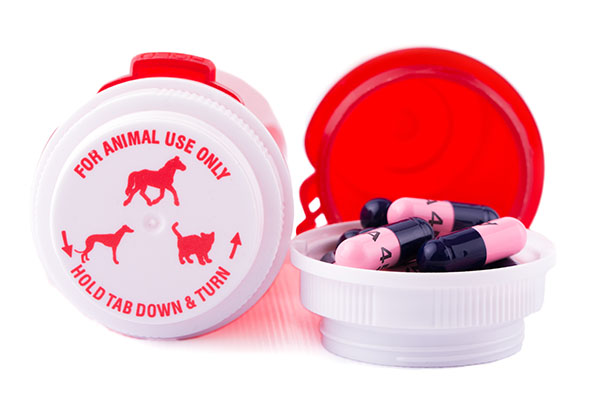On occasion, our posts contain affiliate links. However, we only recommend products that we truly believe in. For more information, visit my privacy policy page.
Author: Dr. Carla Germano, DVM
Urinary tract infections (UTI’s) in dogs are a fairly common occurrence and something we veterinarians diagnose often.
The anatomy of the urinary tract in dogs is similar to that of humans and is divided into the upper and lower urinary tracts.
The upper urinary tract includes the kidneys and the ureters which are the tubes that carries urine from the kidney to the bladder.
The lower urinary tract includes the bladder and urethra which is the tube that connects the bladder to the outside world.
In male dogs the urethra is quite long and runs through the penis.
In females it is very short, traveling a brief distance from the urethral opening in the vagina to the bladder.
What Are The Symptoms of Urinary Tract Infection
Traditionally, a UTI refers to bacteria in the lower urinary tract, particularly the bladder.
Once bacteria enter the bladder it can cause inflammation of the bladder lining (called cystitis) which leads to an increased urge to urinate, straining to urinate and blood in the urine.
Often, dogs will have difficulty holding their urine and have accidents in the house or go outside and posture to urinate numerous times while producing very little or no urine.
Some infections will also cause an increase in drinking, lethargy, a foul odor to the urine or genital licking.
Rarely, dogs with bladder infections will have no clinical signs, this is called an “occult” urinary tract infection.
Canine Bladder Infection in Dogs – Causes
The most common type of infection is called an ascending infection, meaning that bacteria enter the urinary tract externally and move up the urethra into the bladder.
Since the female urethra is very short and they usually squat on the ground to urinate, these infections are more common in female dogs, though they can happen in male dogs as well.
Bacteria can be picked up from the environment in this way, or from the mouth when dogs lick themselves or via fecal bacteria may spread to the genitalia.
This is especially common in female dogs after they have had diarrhea due to the short distance between the anus and genital openings.
There are other conditions that can also pre-dispose a dog to a UTI.
Older pets are considered more susceptible for a few reasons.
Older pets may not have as robust of an immune system, making it more difficult to fight off an infection.
They may also have concurrent age-related issues such as arthritis that may make it more difficult to keep their genitalia off the ground or empty their bladders completely when they posture to urinate.
Many female dogs are born with excess tissue around the vulva or a vulva that is recessed inward which causes urine to pool around the urethral opening.
Contrary to popular belief, urine is not actually sterile and normally contains low levels of bacteria that can replicate on the skin and go back into the urethra.
Similarly, abnormalities of the structure of the penis or prepuce (the skin that covers the penis) can lead to a similar outcome.
Though less common, dogs can also be born with internal structural abnormalities of any part of the urinary tract that predispose to infections.
When you think of urine, most people picture a yellow liquid.
In dogs, blood that has traveled through the body enters the kidneys, their job is to keep in the “good” bits like proteins and nutrients a dog needs and filter out the toxins and byproducts that result from various metabolic processes normally occurring in the body.
These byproducts are what give the yellow color to the urine. The kidney also makes sure that the right amount of water stays in the body.
The degree of “yellow-ness” is the result of the ratio of those filtrates to the water component.
This can actually be measured and is called urine concentration.
As you probably have noticed, on days when you drink a lot of water, your urine is less yellow a.k.a. more dilute.
Urine concentration can vary a lot through the day, typically getting more dilute as the day progresses, but there is an ideal range that the kidneys work to maintain by adjusting how much fluid is allowed to leave the body.
This is important because some of those byproducts actually have antibacterial properties that make the urine inhospitable to bacterial overgrowth.
If the urine becomes too diluteand the concentration goes down, those antibacterial properties are also diluted, giving bacteria a chance to replicate.
This is important because there are certain conditions, namely Cushing’s disease and kidney disease, that can cause this process to derail, leading to urine that is excessively dilute and therefore increasing the chances an infection will develop.
Though necessary to manage certain diseases, prolonged doses of oral steroids will also dilute the urine and reduce the immune system’s ability to fight infections.
Canine patients with diabetes mellitus often have dilute urine but additionally can have excess sugar in their urine.
Sugar is something bacteria love to eat, and its presence further perpetuates bacterial growth.
Tumors or polyps (benign growths) in the bladder or urethra can create a surface for bacteria to adhere to (this is called a nidus) as well as block urine from appropriately leaving the bladder resulting in pooling and bacterial accumulation.
Bladder stones can have a similar effect, but we will discuss that in more detail later on in this article.
How Are Canine Bladder Infections Diagnosed?
When a dog starts to display any abnormal urinary symptoms, it’s important that they be evaluated by a veterinarian as soon as possible.
UTI’s are not treatable with over the counter or at-home remedies. The first step your veterinarian will take after a thorough exam will be to evaluate a urine sample.
This can show the presence of red and white blood cells, bacteria, protein, crystals or glucose in the urine.
It can also determine the pH (whether the urine is acidic or alkaline), which is a helpful piece of information. Once we have that knowledge, we can usually get an idea of what is most likely causing the infection and the next steps.
This is an important test because other conditions can mimic a UTI and create the illusion of infection when there are actually no bacteria.
Treatment with antibiotics without an actual infection can lead to the development of resistant bacterial species that are much harder to treat and can have more severe and lasting consequences.
Some additional diagnostics or testing may be needed in certain circumstances, including x-rays to evaluate for certain types of bladder stones.
An ultrasound of the bladder can also look for stones (there are some types that cannot be seen on an x-ray) as well as tumors, polyps or other structural abnormalities of the bladder.
In the case of repeat or atypical infections a urine culture can tell us exactly what type of bacteria is growing as well as what medications will be effective at eradicating them.
Cultures can be a bit expensive but are invaluable in expediting correct treatment and avoiding potential long and short-term side effects of inappropriate medications or treatment.
What Do Bladder Stones Have To Do With Urinary Tract Infections?
Bladder stones or uroliths, are also fairly common in dogs and have a complicated relationship with urinary tract infections.
Dogs can have several different types of bladder stones including what we call “struvites”, calcium oxalate, urate and cystine stones.
The two most common are struvite and calcium oxalate. Cystine, urate and calcium oxalate stones are named for their main mineral component and are all usually caused by a genetic abnormality that results in a predisposition to their development.
If these types of stones form, they can act as a nidus and bacteria can attach and hide in.
Patients with stones may improve on antibiotic therapy when the free bacteria floating in the urine are eliminated but infections will quickly recur when the bacteria from the stone quickly regrow.
The stones we call “struvites” are actually made of magnesium ammonium phosphate hexahydrate but have been, thankfully, nicknamed struvite stones which is a bit easier to say.
This type of stone has a more intimate relationship with UTI’s because they form very easily in an alkaline environment (when the urine has a high pH value).
Urine is normally neutral or slightly acidic, but the presence of bacteria can lead to an increase in the urine pH which makes these struvite stones more likely to form thus making them almost always associated with a UTI.
Once that happens, the bacteria attach to the stone/stones, and it becomes difficult if not impossible to eliminate the infection until the stone is dissolved.
How Are Canine Urinary Tract Infections Treated?
In an uncomplicated urinary tract infection, antibiotics are usually the treatment of choice.
Not all antibiotics are appropriate for urinary tract infections and the results of the testing conducted by your veterinarian will help them determine what to prescribe.
In some cases, anti-inflammatory or other pain medication will also be recommended to help make your dog more comfortable while the infection is resolving.
In more complicated and repeat infections a urine culture or other testing mentioned above may be needed to determine what is the best medication choice for the particular bacteria that is growing in the bladder.
As we discussed above, it is also important to resolve any stones otherwise the infection will recur as soon as antibiotics are ceased.
Struvite stones can usually be dissolved by feeding a special diet prescribed by your veterinarian.
The other types of stones usually need to be removed surgically, via a process called urohydropulsion or with a treatment called lithotripsy.
Urohydropulsion involves flushing small stones out via a urinary catheter.
Lithotripsy involves using a laser or ultrasonic waves to break the stones into very tiny pieces so they can be passed normally.
These both usually require sedation or anesthesia and are usually done by a specialist.
Other underlying causes such as polyps and some types of tumors can be removed surgically.
Structural abnormalities of the urinary tract can also sometimes be surgically resolved. In severe cases, surgery to reconstruct the vulvar tissue called a vulvoplasty can also be performed.
What Are The Consequences of UTI’s?
In addition to the obvious stress and discomfort of a UTI, more serious conditions can also develop if a UTI goes untreated.
The most common of these is that the infection can make its way up the ureter and into the kidney.
This is called pyelonephritis and can ultimately damage the kidney and its ability to function.
It’s also hard to diagnose this as the symptoms do not differ significantly from a UTI.
More importantly, because of its structure, it’s also more difficult to treat an infection in the kidney and stronger antibiotics for longer periods are usually needed.
Similar consequences can occur if bacteria find their way into the prostate in male dogs.
This can lead to something called prostatitis and can cause significant inflammation of the prostate.
This is usually very painful and can also make it more difficult for your dog to urinate.
It is also difficult to penetrate the prostate with antibiotics and treatment usually needs to be more aggressive.
Untreated bladder stones can significantly increase the discomfort associated with a UTI but can also cause a blockage if they pass out of the bladder and get lodged in the urethra.
This is very dangerous and can lead to a bladder rupture and other life-threatening consequences.
Emergency surgery to remove or dislodge the stones is usually needed to resolve this.
How To Prevent UTI’s in Dogs?
Sometimes UTIs strike and it’s simply a matter of bad luck.
Your dog may get an infection once and not again any time soon.
In those cases, there isn’t a lot that can be done to prevent the infection.
It’s always a good practice, however, to make sure to take your dog out frequently to encourage flushing of the bladder and the urethra of any bacteria trying to make its way up the urinary tract.
If your pet has a pre-existing or chronic issue, there are some other precautions that may be helpful.
If your dog has a recessed vulva or extra tissue, wiping gently with a hypoallergenic baby wipe can be helpful at removing any urine clinging to the area.
In older dogs having trouble posturing, using a supportive harness or towel to help them posture to urinate outside can also prevent contact with the ground.
Managing chronic conditions like diabetes and Cushing’s disease can help reduce associated infections as well.
Veterinarians often recommend routine urine screening in these patients for just this reason.
Keeping up with testing and monitoring on a regular basis is important to keep these pets as healthy as possible.
Most urinary supplements are unnecessary in dogs unless directed by your veterinarian.
Though the research is mixed, there is a possibility that cranberry extracts can prevent adherence of certain kinds of bacteria (particularly E. coli) to the bladder lining.
This will not help treat an existing infection but may be helpful in reducing chronic infections.
Patients with a history of bladder stones may also benefit from a long-term prescription diet or in some cases medications to adjust the pH of the urine.
Your veterinarian will help you make the decision if this is appropriate for your dog.
While briefly frustrating, most urinary tract infections respond well to antibiotic therapy and symptoms usually resolve within a few days of starting medication.
Most dogs recover uneventfully and do not require further treatment.
Rarely, further investigation is warranted but your veterinarian will guide you through this process and get your pup feeling their best as soon as possible!
Finding an Ethical Shiba Inu Breeder in California
Thanks for visiting Myfirstshiba.com! We do our very best in providing our readers with awesome content about our beloved Shiba Inu breed. Some of our articles include reviews and recommendations to our favorite products. We do occasionally earn commissions from certain affiliate links that help support our work and mission. Thanks again for visiting. Shiba Kisses To All!









